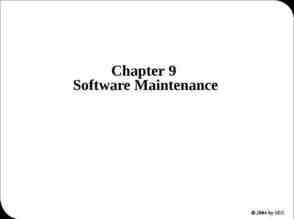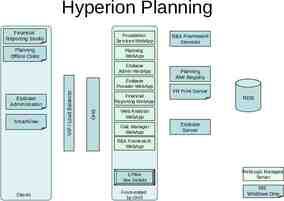Database Security and Auditing: Protecting Data Integrity and
46 Slides1,007.00 KB

Database Security and Auditing: Protecting Data Integrity and Accessibility Chapter 9 Auditing Database Activities

Objectives Use Oracle database activities Learn how to create DLL triggers with Oracle Audit database activities using Oracle Database Security and Auditing 2

Objectives (continued) Audit server activities with Microsoft SQL Server 2000 Audit database activities using Microsoft SQL Profiler Use SQL Server for security auditing Database Security and Auditing 3

Using Oracle Database Activities Several types of activities: – Application activities: SQL statements issued against application tables – Administration activities: commands issued for maintenance and administrative purposes – Database events: events that occur when a specific activity occurs Database Security and Auditing 4

Creating DDL Triggers with Oracle Audit program provides: – Audit trail for all activities – Opportunity for using process controls Database activities statements (in addition to DML): – – – – Data Definition Language (DDL) Data Control Language Database events SQL statements audit trail Database Security and Auditing 5

Creating DDL Triggers with Oracle (continued) Use CREATE TRIGGER: – DDL statements – Database events Database Security and Auditing 6

Example of LOGON and LOGOFF Database Events Steps: – Log on as SYSTEM – Create the APP AUDIT LOGINS table – Create two triggers: One that fires after the logon event One that fires before the logoff event – Log on as DBSEC; disconnect after a few minutes – Log on as SYSTEM to check the auditing table Database Security and Auditing 7

DDL Event Example Steps: – Log on as SYSTEM – Create a trigger that fires before an ALTER statement is completed – Log on as DBSEC and alter a table Pseudocolumns: – ora dict obj name – ora dict obj owner – ora sysevent Database Security and Auditing 8

Auditing Code with Oracle Steps: – – – – – – Log on as DBSEC Create an auditing table Create a table and populate it with two records Create a trigger to track code Update the new table Look at the contents of the APP AUDIT SQLS table Database Security and Auditing 9

Auditing Database Activities with Oracle Oracle provides mechanisms for auditing all: – Who creates or modifies the structure – Who is granting privileges to whom Two types of activities based on the type of SQL command statement used: – Defined by DDL (Data Definition Language) – Defined by DCL (Data Control Language) Database Security and Auditing 10

Auditing DDL Activities Use a SQL-based AUDIT command Verify auditing is on: – Check the AUDIT TRAIL parameter – Values: DB DB EXTENDED OS NONE Database Security and Auditing 11

Auditing DDL Activities (continued) Database Security and Auditing 12

DDL Activities Example 1 Steps: – Use any user other than SYS or SYSTEM to create a table – Add three rows into the table – Log on as SYSTEM or SYS to enable auditing: For ALTER and DELETE – Log in as DBSEC: Delete a row Modify the structure of the table Database Security and Auditing 13

DDL Activities Example 1 (continued) Steps (continued): – Check the audit records – Log in as SYSTEM and view the DBA AUDIT TRAIL table – Turn off the auditing option – Check the content of the DBA AUDIT OBJECT to see auditing metadata Database Security and Auditing 14

DDL Activities Example 1 (continued) Database Security and Auditing 15

DDL Activities Example 1 (continued) Database Security and Auditing 16

DDL Activities Example 2 Steps: – Log in as SYSTEM or SYS to enable auditing for the TABLE statement; ALTER, CREATE, and DROP TABLE statements – Log on as DBSEC and create a table, then drop the table – Log on as SYSTEM; view the content of DBA AUDIT TRAIL – Turn off auditing for the TABLE statement Database Security and Auditing 17

DCL Activities Example Steps: – Log on as SYSTEM or SYS and issue an AUDIT statement – Log on as DBSEC and grant SELECT and UPDATE to SYSTEM – Log on as SYSTEM and display the contents of DBA AUDIT TRAIL – Review audit data dictionary Database Security and Auditing 18

DCL Activities Example (continued) Database Security and Auditing 19

Example of Auditing User Activities Steps: – Log on as SYSTEM or SYS, to issue an audit statement – Log on as DBSEC and create a temporary table – Go back to SYSTEM to view the contents of DBA AUDIT TRAIL Database Security and Auditing 20

Audit Trail File Destination Steps: – Modify the initialization parameter file, INIT.ORA; set parameter AUDIT TRAIL to the value OS – Create a folder/directory – Set AUDIT FILE DEST to the new directory – Shut down and restart the database – Connect as DBSEC Database Security and Auditing 21

Oracle Alert Log Audits database activities: – Errors: Errors related to physical structure are recorded in the Alert log Monitor errors every five to ten minutes; can be done using a Windows or UNIX script Syntactical errors are not recorded – Startup and shutdown Date and time of each occurrence Database Security and Auditing 22

Oracle Alert Log (continued) Database Security and Auditing 23

Oracle Alert Log (continued) Database activities (continued): – Modified initialization parameters, each time a database is started – Checkpoints: configure Oracle to record checkpoint time – Archiving: view the timing for all redo log sequences, as well as archiving times – Physical database changes Database Security and Auditing 24

Oracle Alert Log (continued) Database Security and Auditing 25

Auditing Server Activity with Microsoft SQL Server 2000 Way to track and log activity for each SQL Server occurrence Must be a member of the sysadmin fixed server role Two types of auditing for server events: – Auditing – C2 auditing Auditing affects performance and can be costly Database Security and Auditing 26

Implementing SQL Profiler User interface for auditing events For each event you can audit: – – – – – – – Date and time of the event User who caused the event to occur Type of event Success or failure of the event Origin of the request Name of the object accessed Text SQL statement Database Security and Auditing 27

Implementing SQL Profiler (continued) Database Security and Auditing 28

Security Auditing with SQL Server Steps for setting security auditing level: – – – – – Open Enterprise Manager Expand the appropriate SQL Server group Right-click on the desired server Click Properties On the security tab, select the desired security level Database Security and Auditing 29

Security Auditing with SQL Server (continued) Database Security and Auditing 30

Security Auditing with SQL Server (continued) Auditable events: – – – – – – – ADD DB USER ADD LOGIN TO SERVER ROLE ADD MEMBER TO DB ROLE ADD ROLE APP ROLE CHANGE PASSWORD BACKUP/RESTORE CHANGE AUDIT Database Security and Auditing 31

Security Auditing with SQL Server (continued) Auditable events (continued): – – – – – – – DBCC LOGIN LOGOUT LOGIN CHANGE PASSWORD LOGIN CHANGE PROPERTY LOGIN FAILED Login GDR (GRANT, DENY, REVOKE) Database Security and Auditing 32

Security Auditing with SQL Server (continued) Auditable events (continued): – – – – – – Object Derived Permissions Object GDR Object Permissions Server Start and Stop Statement GDR Statement Permission Database Security and Auditing 33

Security Auditing with SQL Server (continued) Database Security and Auditing 34

Security Auditing with SQL Server (continued) New trace information: – – – – A name for the trace The server you want to audit The base template to start with Where to save the audit data, either to a file or to a database table – A stop time, if you don’t want the trace to run indefinitely Database Security and Auditing 35

Security Auditing with SQL Server (continued) Database Security and Auditing 36

Security Auditing with SQL Server (continued) Database Security and Auditing 37

Security Auditing with SQL Server (continued) Steps to add Login Change Password event – Expand the Security Audit node under Available event classes – Click Audit Login Change Password Event – Click the Add button Database Security and Auditing 38

Security Auditing with SQL Server (continued) Database Security and Auditing 39

Data Definition Auditing Audit DDL statements: – Object:Created – Object:Deleted – Will audit all CREATE and DROP statements Database Security and Auditing 40

Data Definition Auditing (continued) Database Security and Auditing 41

Database Auditing with SQL Server Database Security and Auditing 42

Database Errors Auditing with SQL Server Database Security and Auditing 43

Summary Activities types: – Application activities – Administration activities – Database events Oracle triggers provide a way to create an audit trail Auditable Oracle database activities: logon, logoff, startup and shutdown Database Security and Auditing 44

Summary (continued) Oracle provides the SQL AUDIT command: initialization parameter AUDIT TRAIL NOAUDIT used to stop auditing DBA AUDIT TRAIL data dictionary view Oracle Alert Log: – Database errors – Modified initialization parameters – Checkpoints Database Security and Auditing 45

Summary (continued) Microsoft SQL Server 2000: way to track and log SQL Server activity Must be a member of sysadmin fixed role to enable or modify auditing SQL Profiler: – Visualization tool – Audit errors that occur within the database Database Security and Auditing 46






